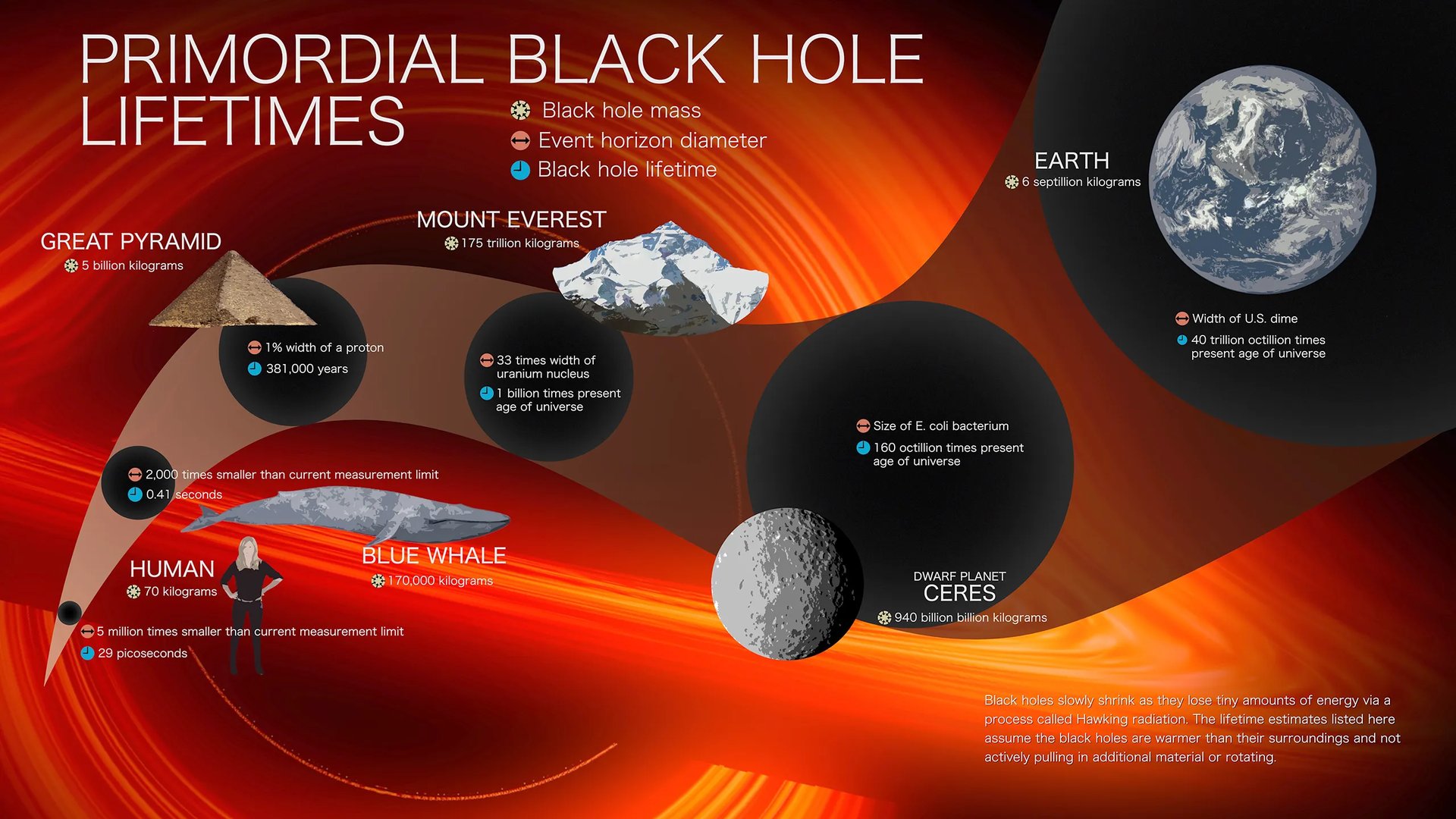Plenty of groups have been theorizing about Primordial Black Holes (PBHs) recently. That is in part because of their candidacy as a potential source of dark matter. But, if they existed, they also had other roles to play in the early universe. According to a recent draft paper released on arXiv by Jeremy Mould and Adam Batten of Swinburne University, one of those roles could be as the seeds that eventually form both quasars and radio galaxies.
PBHs are theorized to have started very early on in the universe, within the first few thousand years. Instead of being created by the collapse of a massive star, like most modern black holes we think of, they would have been created by minor discrepancies in the radiation environment that made up the entire universe at that time. In the cosmic microwave background, we see those discrepancies as small fluctuations in the signal still reaching Earth, though no one has yet definitively tied those discrepancies to the formation of PBHs.
But if PBHs did exist that early, their gravitational pull could have acted as a “seed” for accreting more gas and dust that would eventually allow them to grow into the supermassive black holes that are at the center of the brightest known objects in the universe – quasars. Quasars vary in their luminosity over time, and the quasar luminosity function (QLF) that defines that change, is an important piece of mathematics that shows how quasars evolve and affect the formation of galaxies around themselves.
Fraser describes PBHs and why they are garnering so much attention from the cosmological community.
Importantly, the mathematics behind the QLF, which is defined by observations of the quasars themselves, aligns neatly with the predictions put forward by the theory that shows PBHs acting as a seed that evolves into a quasar. It also fits a mathematical formula called the Schechter Function, lending more credence to the theory. But importantly, it also offers a solution to what fuels quasars in the first place.
Tiny galaxies could be the fuel that lights up quasars as they swallow them, though they would be invisible to us at such a distance. As the supermassive black hole at the center of the quasar consumes all of the galaxies nearby, it slowly starts to lose its luminosity, tracking the QLF curve that shows its likely to be less bright the older (i.e. the higher red shift) it is.
Another interesting consequence of the theory put forward in the paper is a tie between quasars and radio galaxies, a type of galaxy that emits strong bursts in the radio spectrum. If the theory about quasars being “seeded” by primordial black holes is correct, they could eventually result in a radio galaxy once they have calmed down and consumed all the matter nearest to them. To prove the point, the authors note there are similarities between the luminosity functions of quasars and radio galaxies, just with the overall amplitude of the radio galaxies scaled down. Since they are scaled down, though, they also last longer, with the expected lifetime of a radio galaxy being about 10 times that of a quasar, according to the paper.
Fraser describes quasars – the brightest objects in the universe.
While this theory aligns well with much of the observational data we have collected on quasars and radio galaxies so far, it does also make some predictions to prove itself falsifiable. First, it suggests that quasars could be used as standard candles for the measurement of cosmological distances, a title currently held by Type Ia supernovae due to their standardized brightness. Quasar’s origins from PBHs could prove a baseline from which to understand their brightness, eventually allowing them to be used as a standard candle as well.
Perhaps more falsifiably, the James Webb Space Telescope will be able to capture information about quasars even further back in time than has ever been possible before. If the new data aligns with the predictions made by the theory, then, according to the idealized version of the scientific method, it will gain traction among other scientists. It might be a while before Webb releases any data that could prove or disprove the theory, but it’s always nice to have one in cosmology with clearly provable predictions. If it happens to result in cosmologists gaining another way to measure distance and a better understanding of galaxy formation in the early universe, that would just be an added bonus.
Learn More:
J Mould & A Batten – If quasars form from primordial black holes
UT – Could Primordial Black Holes Be Hiding in Plain Sight?
UT – Primordial Black Holes Could Have Accelerated Early Star Formation
UT – JWST Cycle 4 Spotlight, Part 3: Supermassive Black Holes and Cosmic Noon
